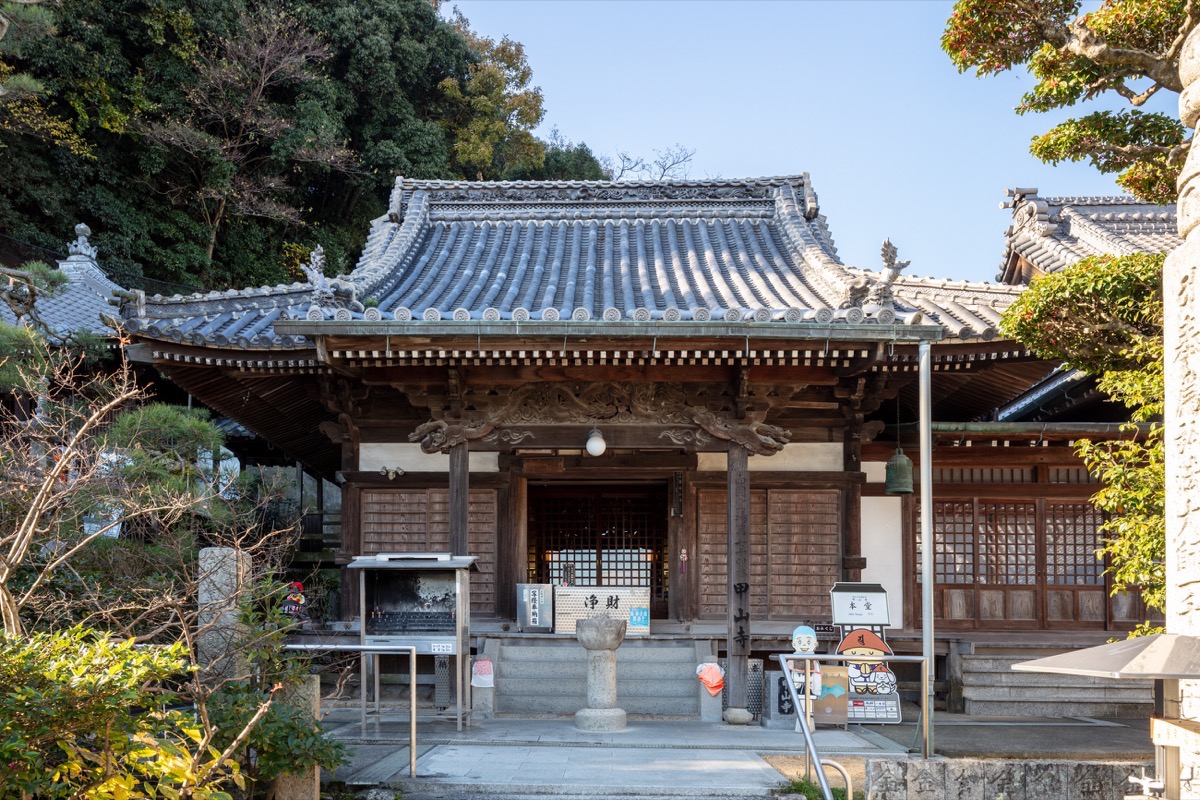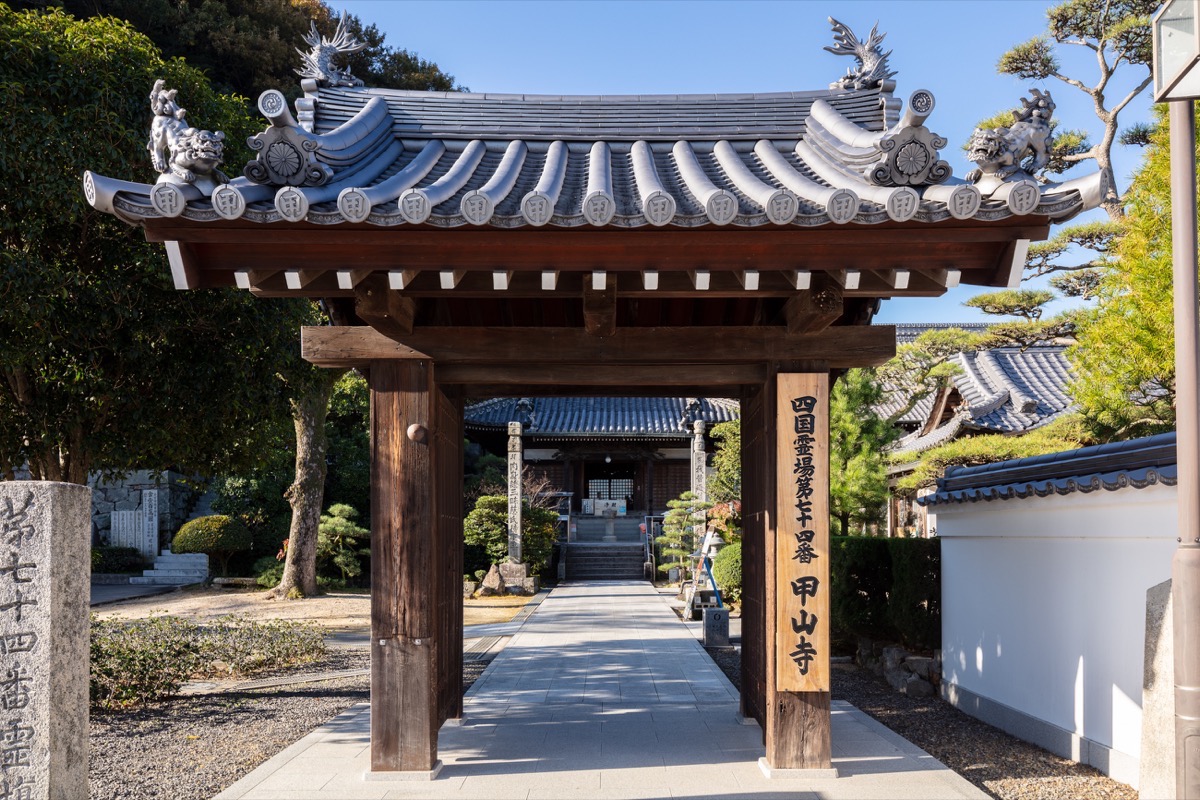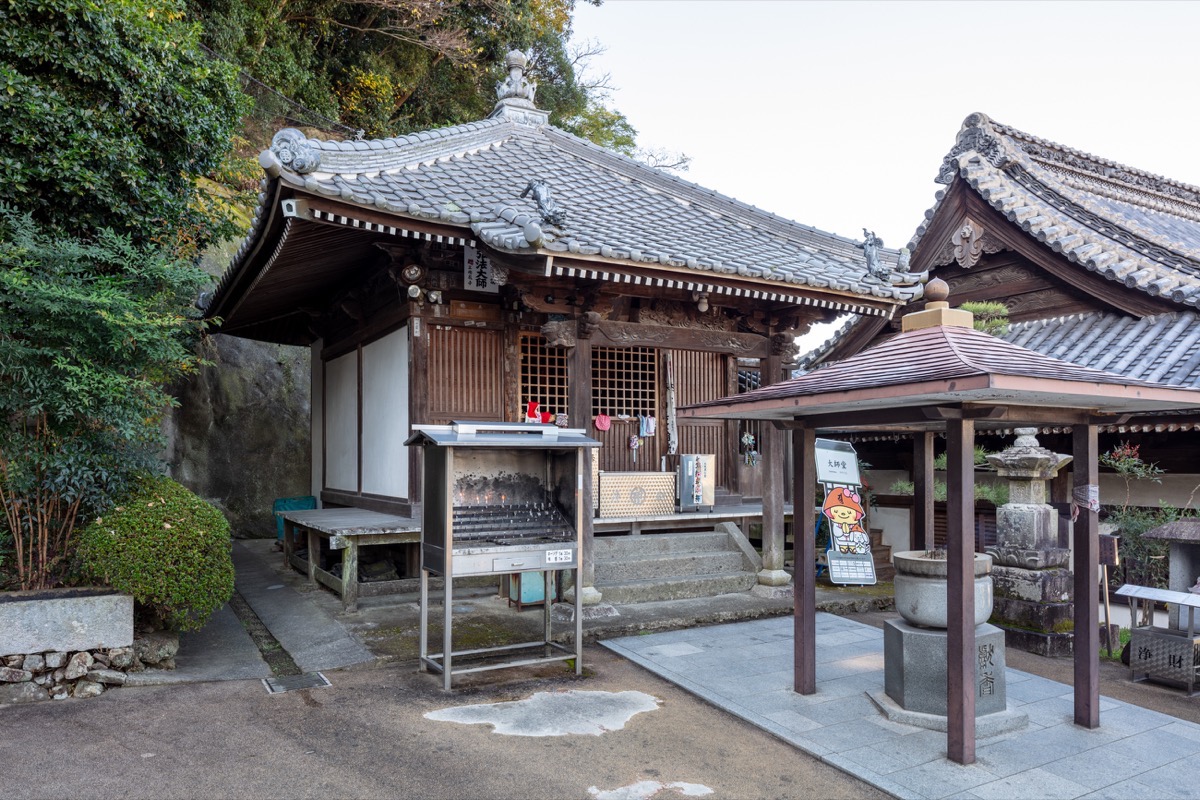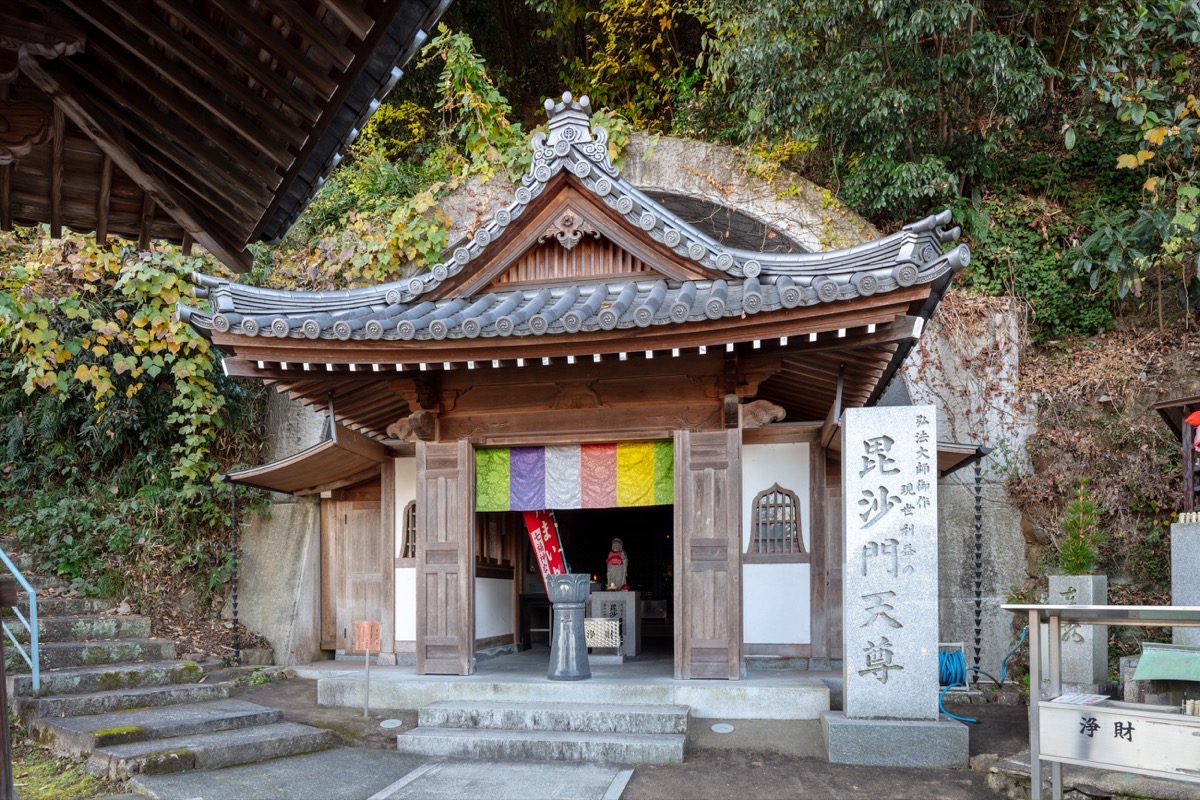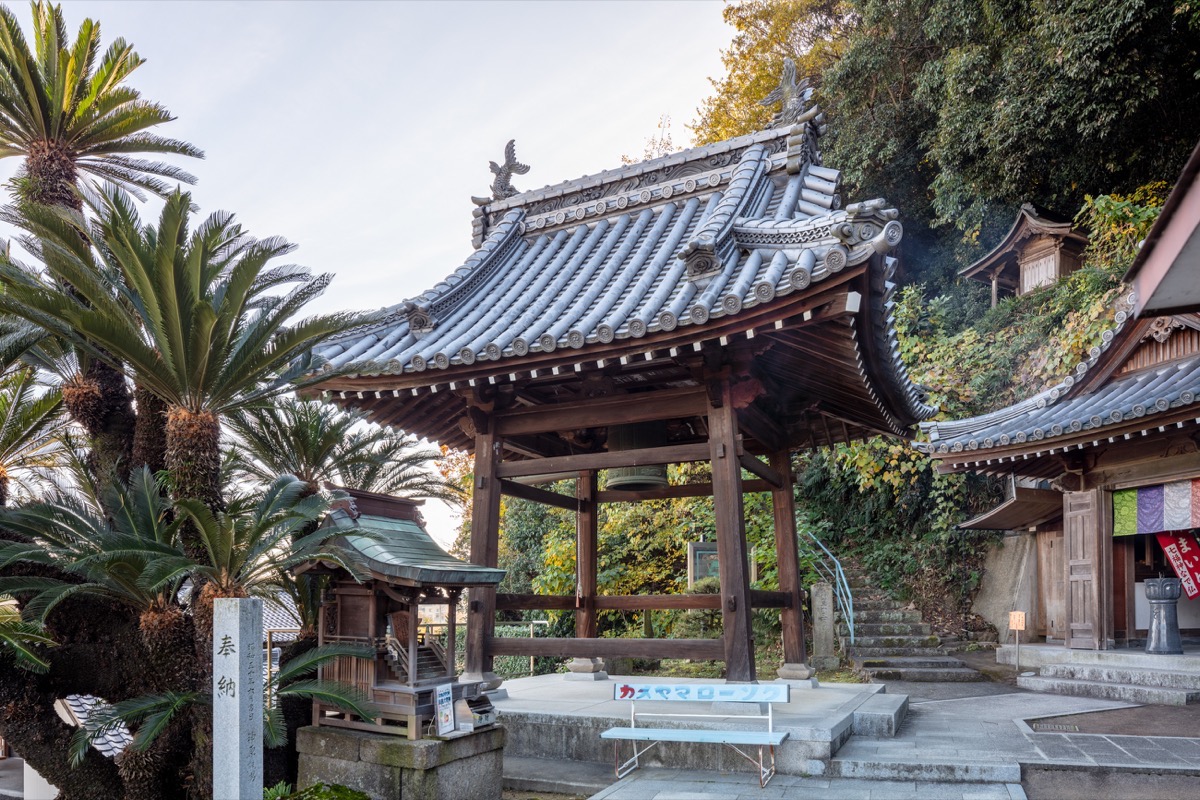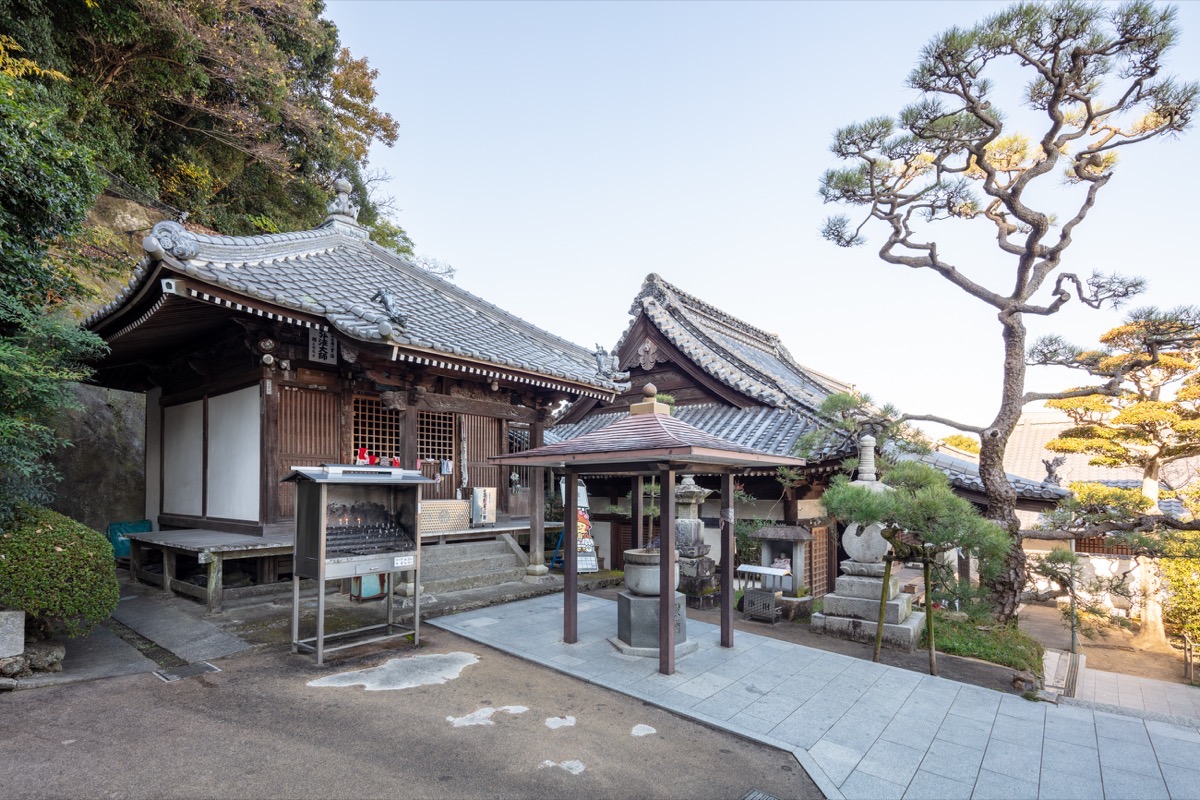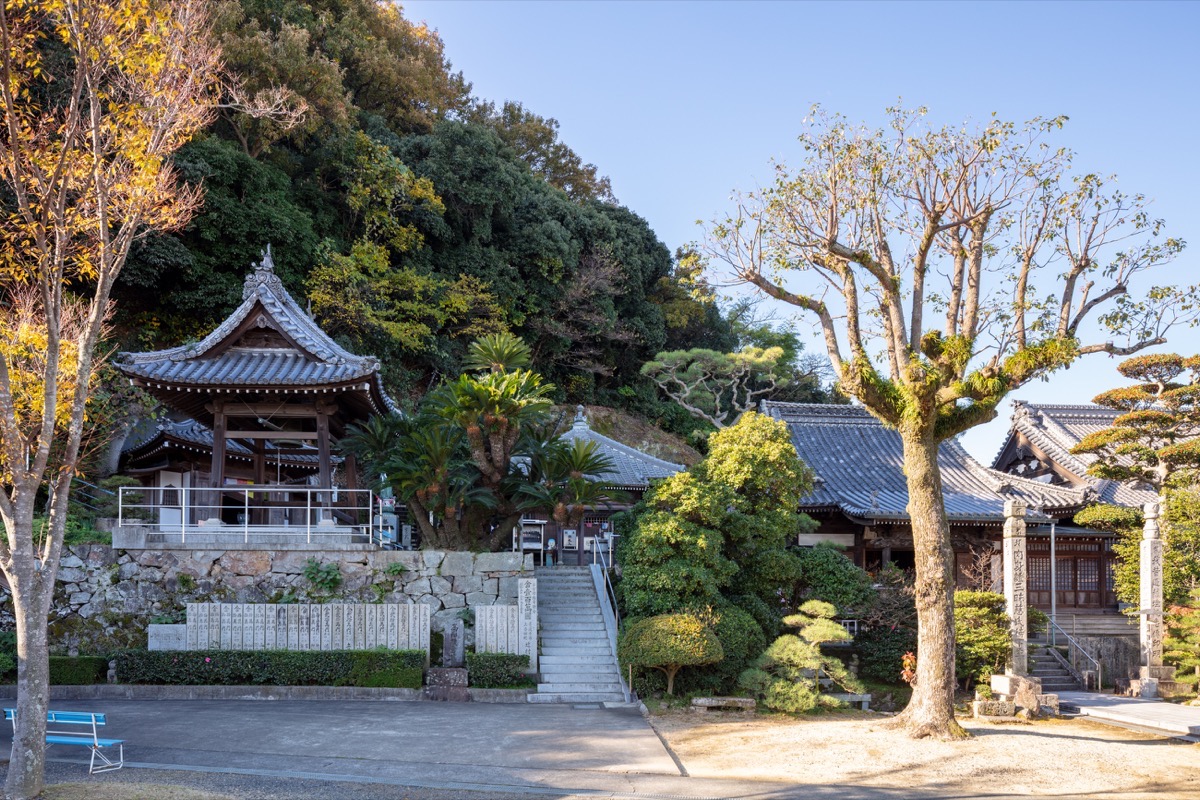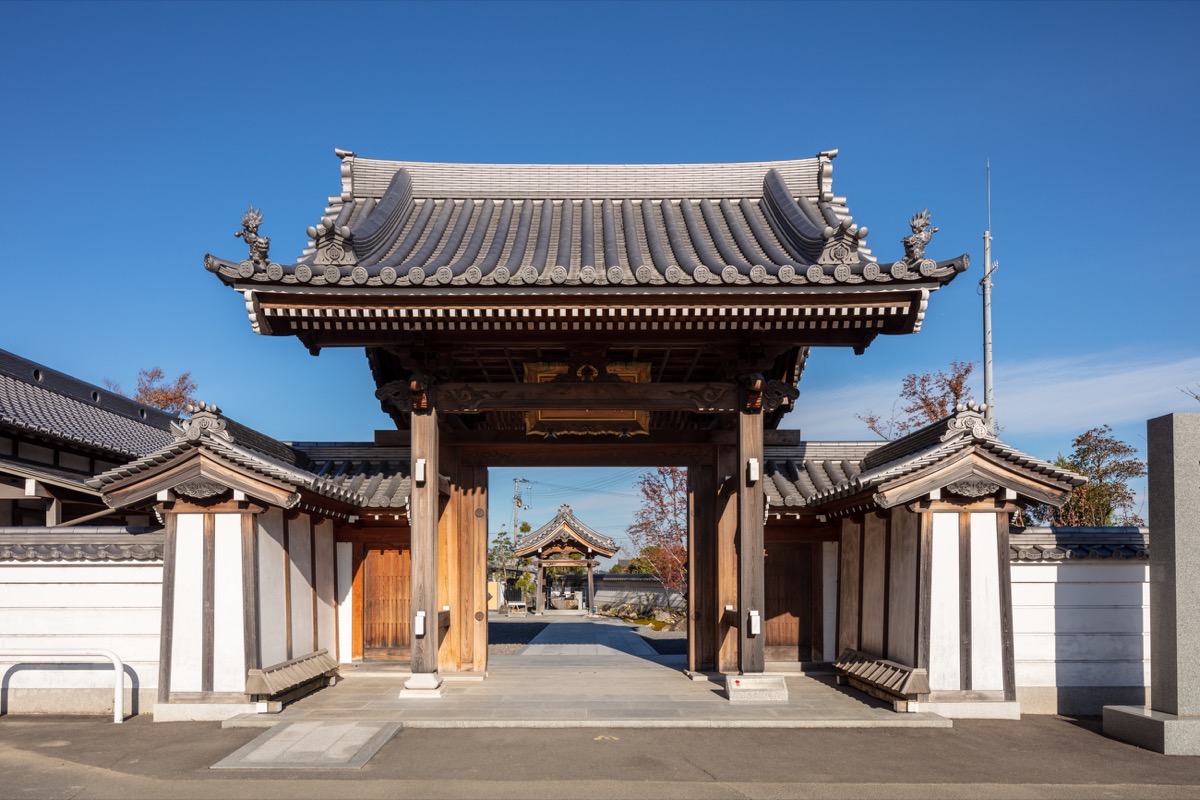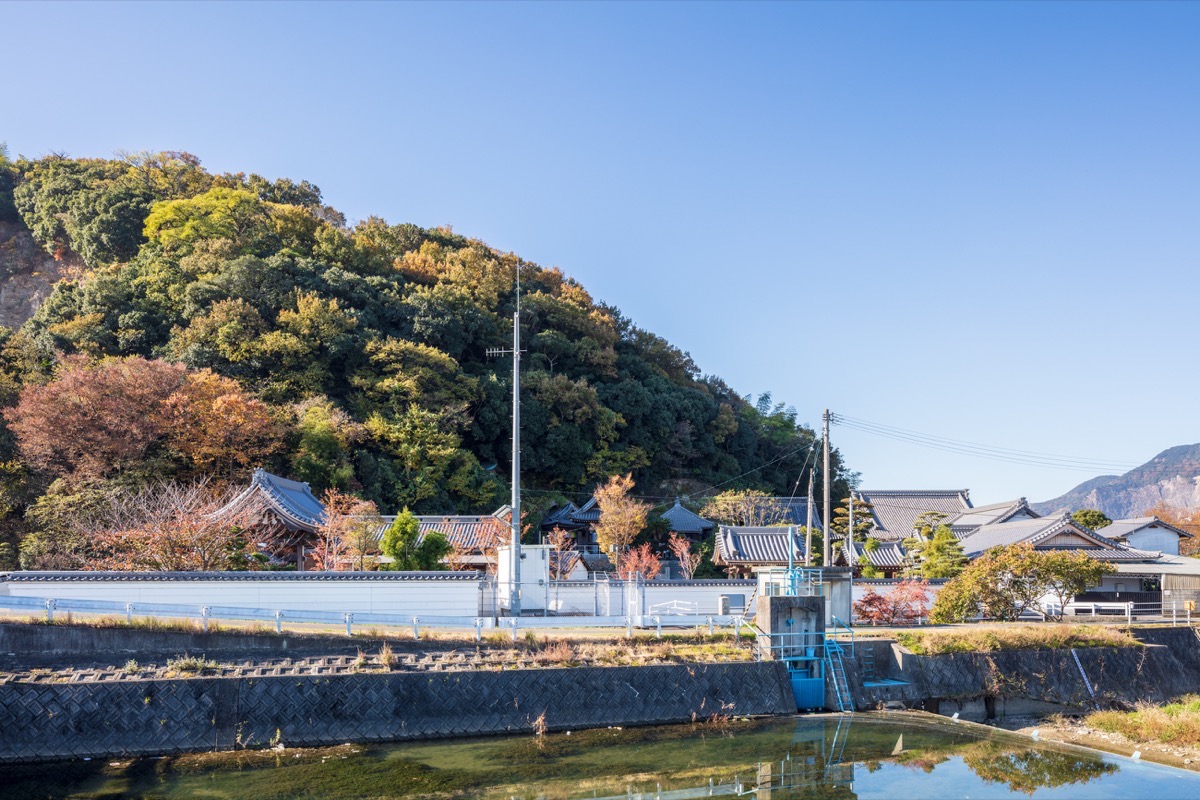Koyamaji TempleThe 74th Temple Koyamaji Temple
| District | Shikoku Henro pilgrimage | Period | ー |
|---|---|---|---|
| Set Content/Set Date | |||
| Owner | Koyamaji Temple | Location | 1765-1 Hirotacho, Zentsuji, Kagawa |
Documents from approximately 300 years ago state that this area was once a single field called Sen-yugahara (Field Where Hermits Play). This area was a playground for the young Kobo Daishi (Kukai), who was born in Zentsuji. Apparently this is where he used to make Buddha statues with mud, built temples out of plants, and layer stones to create pagodas. This area is also home to Koyamaji Temple, the 74th sacred spot along the Shikoku Henro pilgrimage.
According to writings documenting the history of Koyamaji Temple, its origins date back 1,200 years. At that time, when Kobo Daishi was walking around Mt. Koyama in search of a place to build a temple, a saint appeared from a cave saying, "Build a temple here". The cave with a statue of Bishamonten (Visravana) enshrined inside, which is located to the left of the Daishido Hall, was where Koyamaji Temple originally began.
Afterwards, Kobo Daishi, who took over renovations for the Manno-ike Reservoir, Japan’s largest reservoir, prayed for the safe completion of the project at the cave on Mt. Koyama. With cooperation from Kobo Daishi’s followers, the Manno-ike Reservoir renovations were completed safely in just three months. To commemorate this achievement, a building was erected with a statue of the Healing Buddha enshrined inside.

